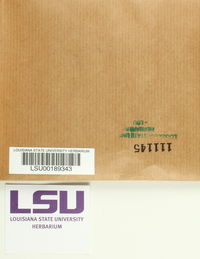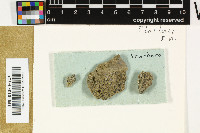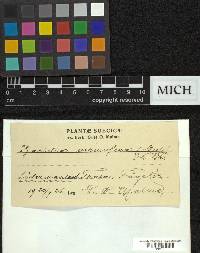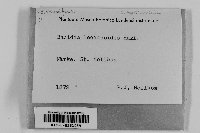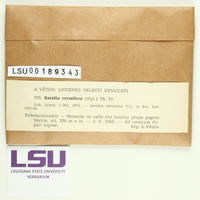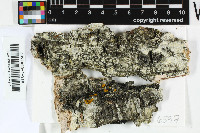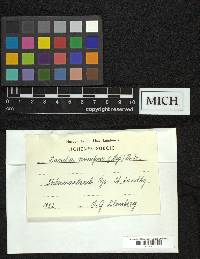
Consortium of Lichen Herbaria
- building a Global Consortium of Bryophytes and Lichens as keystones of cryptobiotic communities -
- Home
- Search
- Images
- Species Checklists
- US States: O-Z >
- US National Parks
- Central America
- South America
- US National Parks
- Southern Subpolar Region
|
|
|
|
Family: Ramalinaceae
[Bacidia vermifera (Nyl.) Fr., moreLecidea vermifera Nyl., Lecidea vermifera f. rectiuscula Nyl., Lecidea vermifera f. vermifera Nyl., Scoliciosporum vermiferum (Nyl.) Arnold] |
Nash, T.H., Ryan, B.D., Gries, C., Bungartz, F., (eds.) 2004. Lichen Flora of the Greater Sonoran Desert Region. Vol 2. Thallus: crustose, continuous, warted, ±rimose to areolate, or discontinuous; areoles: discrete or contiguous, convex, warted or subsquamulose surface: almost white or ±gray Apothecia: flat, remaining so or eventually becoming ±convex, 0.2-0.5 mm in diam. disc: usually black, seldom ±purple-brown, epruinose margin: concolorous with disc, at first distinct, level with or raised above disc, persistent or rarely finally excluded exciple: laterally 25-45 µm wide, without crystals, red-brown to black-brown (K+ purplish, N+ orange), evenly pigmented or darker along edge, fading below; edge without zone of enlarged cell lumina epithecium: dark red-brown to black-brown (K+ purplish, N+ orange), without crystals hymenium: hyaline, 45-70 µm tall; paraphyses: 1.2-2.4 µm wide in mid-hymenium, apices usually ±clavate, 1.2-6.1 µm wide, often with distinct hoods of brown pigment hypothecium: colorless or very pale brown (K+ purplish, N+ orange) asci: clavate, 8-spored ascospores: hyaline, 3- to 7-septate, fusiform, bacilliform, clavate, or acicular, at least some strongly sigmoid, 14-31 x 2.1-3.1 µm Pycnidia: half-immersed in thallus, red-brown or black, 40-75 µm in diam. conidia: of two types: (1) ellipsoid or short-bacilliform, non-septate, 2.8-3.6 x 1.2-1.6 µm, or (2) bacilliform, straight or slightly curved, non-septate, 6-9 x 0.5-0.8 µm Spot tests: all negative Secondary metabolites: none detected. Habitat and ecology: on bark of Abies and Quercus in mixed conifer forests at 2600-2900 m World distribution: North America and Europe Sonoran distribution: known from two localities in mountain areas of north-central and southeastern Arizona. |
Powered by Symbiota




